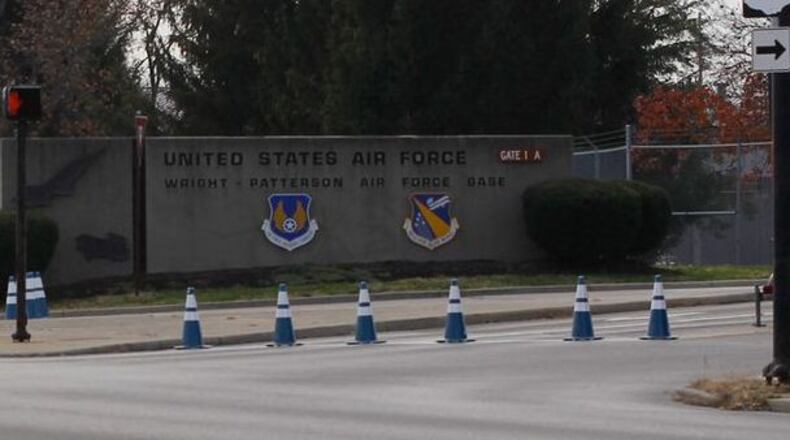It’s official: No Thunderbirds at air show
Organizers of the Dayton Air Show made it official Thursday: They don’t expect the Air Force Thunderbirds to perform at the June 22-23 event because of automatic budget cuts to defense spending.
The Air Force had announced weeks ago that Thunderbird performances would be grounded beginning April 1 because of sequestration, but Dayton Air Show organizers had held out hope the situation might change and bring the team to the Dayton International Airport.
“The Air Show had hoped that Congress would reach an agreement permitting the military jet teams to fly, but with the April 1st deadline rapidly approaching, such an agreement appears unlikely,” organizers said in a statement.
The grounding of military jet teams has canceled air shows across the country, including in Indianapolis and Cleveland, but the Dayton Air Show will fly on with a roster of other acts, organizers said.
The Air Force Reserve 445th Airlift Wing, which flies troop and cargo missions around the globe from Wright-Patterson, will shut down operations on Fridays when civilian employee furloughs begin, according to unit leaders.
The wing relies on hundreds of civilian air reserve technicians, who serve double duty as reserve military personnel, to keep nine C-17 Globemaster III cargo jets flying.
Col. Roger Gallet, a special assistant to the wing’s commander, said the furloughs were “unprecedented.”
The unit will attempt to find ways to continue operations as much as possible, but with the expected loss of one work day during a week, “there are some things that simply won’t get done,” he said.
“We will probably have to reduce the number of missions we fly somewhat,” the colonel said.
Wright-Patterson union leaders, meanwhile, welcomed news of shorter, 14-day furloughs, a drop from 22 days, for up to 13,000 of the base's civilian employees while lamenting the Department of Defense decision to keep unpaid time off work.
An Air Force Material Command spokesman, however, said a reduction in furlough days was welcome.
“This is certainly good news for not only our civilian employees at Wright-Patt but across AFMC, and we’ll continue to monitor the situation to see what develops between now and early summer,” spokesman Ron Fry said Thursday.
The American Federation of Government Employees Council 214, which represents thousands of workers at the base and across the Air Force, said representatives will head back to negotiations to work out terms of a 14-day furlough with AFMC.
AFMC and the union had reached an agreement in mid-March on 22-day furloughs. That was before the Pentagon announced a two-week pause on sending out 30-day notices while officials reviewed the impact of recently approved congressional legislation that added $10 billion to the Defense Department’s operations and maintenance account.
“It’s been a sliding process of negotiations and re-negotiations,” said Thomas C. Robinson, an AFGE Council 214 executive assistant at Wright-Patterson.
Fry said he expected the furloughs would occur between mid-June and the end of September.
“This command has a good reputation for working with the employee unions and we are absolutely committed to keeping all the lines of communication open with the union and working with the union,” he said.
Robinson said the Pentagon could have chosen to not furlough civilians. The Defense Department faced $43 billion in budget cuts between now and the end of the fiscal year in September under automatic budget cuts known as sequestration. Furloughing more than 700,000 Defense Department civilian employees over 22 days would have saved up to $5 billion, officials have said.
“You’d be amazed,” Robinson said. “There’s a lot of contracts that can be stopped and cancelled at will, but they didn’t try.”
AFMC and Wright-Patterson spokesmen referred questions on that issue to the Pentagon. A spokeswoman referred questions to a Department of Defense website, which didn’t immediately provide information on the issue.
Even with shorter furloughs, the cuts will still hurt many employees’ pocketbooks, officials said.
Justin A. Bell, 31, an AFGE base executive assistant, has a wife, Tracy, who is on an unpaid maternity leave as a base employee as the family raises two young daughters.
“Our pay is already decreased and we’re looking to get hit again,” he said.
The effects of the furlough will be compounded because premiums for fringe benefits like health care and life insurance will be taken out with less pay to cover costs, officials said.
Todd Harrison, a senior fellow with the Center for Strategic and Budgetary Assessments, said congressional approval to provide the Pentagon with more money for operations and maintenance gave the military flexibility to minimize furlough days.
“If you look past the parochial interest here, the smart way to do this is … you want to cut the things that are the lowest priority that are going to have the least impact on national security,” he said. “That may mean cutting contractors first or that may mean furloughing civilians first. But really, they should make these decisions based on national security” and not on strictly shared sacrifice, he added.
The Air Force, meanwhile, released a report Thursday detailing where personnel and aircraft cuts will take place for the rest of fiscal year 2013, which ends in September.
The active-duty Air Force will cut 6,100 military positions, but Wright-Patterson spokesman Daryl Mayer said it was too early to say how many of those would be at the Miami Valley base. Wright-Patterson would not lose any assigned aircraft from the 445th Airlift Wing.
About the Author
